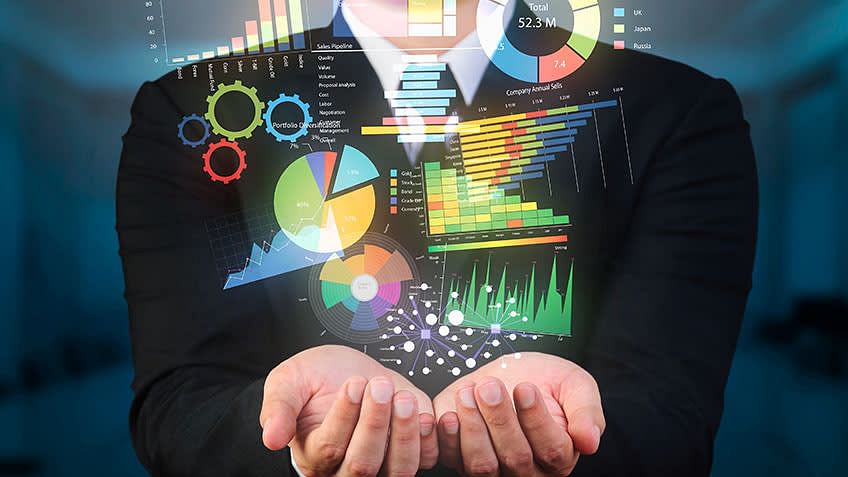In a world of big data, visualization is becoming a key skill set that every business must master.
Digital technology has transformed the way businesses use information, offering insights on all sorts of different business metrics. However, all that data is only useful if you can see it and understand it.
This is where data visualization comes in. Put simply, this is the process of bringing data together in a way that it can be viewed and interpreted. It refers to a collection of techniques designed to communicate data and encode it in a visual format, such as a graph, chart, video, or image. By representing data in this way, it is possible to take collections of numbers that may seem difficult to interpret and turn them into something people can quickly see and understand.
A study from the Wharton School of Business found that effective data visualization could shorten meetings by 24%. For example, a graph representing sales growth over the last few years is much easier to comprehend than the data in table form.
As businesses try to extract insights and manage information, visualization is becoming a rapidly growing market.
The market for data visualization tools is expected to grow by more than 11% annually, from $5.9 billion in 2021 to $10.2 billion in 2026.
As the technology evolves, the sophistication of those graphical representations is likely to grow.
Here are five emerging trends to watch:
Data Stories
By 2025, data stories, which are explained by graphics, will be the most common way of consuming analytics, according to Gartner.
As humans, we are conditioned to respond to storytelling. Data essentially tells you a story of something that is happening within your organization. The best data analysts, therefore, will also be the best storytellers.
A great example comes from the New York Times’ Buy or Rent Calculator, which uses data to show people whether it makes more financial sense to buy or rent a home under several different sets of circumstances.
Real-Time Data
Cloud computing is making it easier for companies to view data in real-time and from multiple locations.
Businesses, for example, have traditionally managed accounts by drawing up monthly or quarterly reports. The process is long and cumbersome and means data is often out of date by the time the report has been compiled.
Using cloud financial management solutions, though, managers can now compile reports showing their financial data in real-time. It allows them to get a clear view of the most up-to-the-minute financial information, making it much easier for them to analyze data and identify potential problems in their finances.
Video Infographics
Video is fast becoming a medium of choice for consuming data-based information.
A recent study found that around two-thirds of people would prefer to learn information via video. Text alone or graphs can make it difficult to gain a complete overview of data. Video brings it to life.
Data scientists are using video infographics to create entertaining and accessible ways for people to consume and understand data. These are typically short videos of a few minutes in length that present information in fun and insightful ways.
Video infographics, for example, have been used to create real-time animations conveying COVID-19 data around the world. It’s an effective way to make information more consumable for a wider range of people.
AR And VR
Virtual reality (VR) and augmented reality (AR) are revolutionizing many industries and data is no different.
When combined with data visualization software, VR and AR allow you to not only view your data, but interact with it. You can create maps, games, models, and virtual events that allow you to experience data in a whole new way. This immersive approach to data allows data scientists to extract previously unseen insights and detect invisible patterns in raw data sets.
Google, for example, used VR to create an interactive map that showed the most commonly asked questions about Brexit from people living in various countries. It was a great way to create a snapshot of public attitudes on the referendum.
IBM’s AR data visualization tools allow data scientists to view data in AR via their smartphones. It allows them to view data sets in 3D, extracting insights that may be missed with a 2D visualization.
AI
As we move into the future, the sheer quantity of data being collected makes it increasingly difficult for data scientists to manage.
Artificial intelligence is stepping up and deploying machine learning and automation to analyze data and extract patterns that would be impossible for humans to spot.
Companies, for example, are using AI to create visual representations of which topics are trending in the news.
This article has been published from the source link without modifications to the text. Only the headline has been changed.




